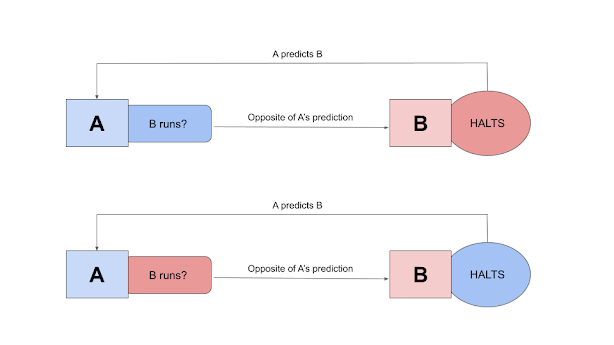Science vs Uncertainty
Posted on September 16, 2023 • 4 minutes • 719 words
Table of contents
In Pursuit of Answers: Science’s Battle with Uncertainty
In the vast realm of science, one pervasive theme continues to perplex even the brightest minds—uncertainty. Whether we’re delving into the intricacies of mathematics, venturing into the enigmatic world of quantum physics, or unraveling the mysteries of life through biology, one thing remains constant: the elusive nature of certainty. Join us on a journey through the corridors of scientific thought as we explore three fascinating examples that showcase how science grapples with the enigma of uncertainty.
The Computation Example: The Halting Problem
Tick. Tock. The alarm remains silent, leaving you in a puzzling limbo of whether to keep your eyes shut or face the day. Could the clock be malfunctioning, or is it simply not time yet to wake up?
If you find yourself grappling with this daily morning conundrum, rest assured, you’re not alone. Even the greatest minds in mathematics once wrestled with a similar enigma—the Halting Problem.
Dating back to 1936, a brilliant mathematician posed a compelling challenge—an intriguing logic situation where no algorithm could ever definitively solve the problem. In other words, he unveiled the realm of the undecidable in the world of algorithms. His name was Alan Turing, and his impact on computer science would forever change our understanding of the limits of computation.
Imagine there exists a magical machine, call it Machine A, that can accurately determine whether a given computer program will eventually halt or run indefinitely. Now, picture another machine, Machine B, which is programmed to do the opposite of what Machine A predicts. What happens when Machine A’s input is Machine B itself?
- If Machine A’s input is a halting program, it will run as expected. But then Machine B will counter and predict that Machine A is running—does this mean the input is still running or halting?
- If Machine A’s input is a running program, it will halt. Yet, Machine B will foresee that Machine A is halting—does this mean the input is halting or running?
Turing’s ingenious logic revealed a profound truth—some questions cannot be answered by any algorithm, no matter how powerful or intelligent it may be. This insight shattered previous assumptions about the omnipotence of algorithms and ushered in a new era of undecidability.

Physics Examples: Schrödinger’s Cat
However, this is not an exclusive particularity of mathematics. In the same way that Turing’s proposition for the halting problem challenged the limits of computation, other philosophical exercises have made enormous changes in other science branches, such as quantum physics. In the past, the results that physicists obtained in experiments such as the “double-slit” made them believe that the quantum world is only determined in one solution when we measure it, and before that, every answer is possible, what is known as “The Observer’s Effect”.
Everything could be solid until Schrödinger made us realize how ridiculous this can sound when we apply it to “our real world”. Imagine we have a cat in a box whose life relies on a quantum process happening or not. Only when we open the box will the cat be either alive or dead. Before that, based on the Observer’s Effect, the cat is in both ways dead and alive. Hilarious, isn’t it?

Biological Example: The Central Dogma
On the other hand, as we pointed out before, no science branch escaped from this fate. Not even life sciences. A long time ago, molecular biology had what was known as its “central dogma”, which implicitly stated that the transfer of genetic information cannot happen from RNA to DNA, which was proven to be wrong with the identification of viral enzymes capable of producing this process, named as “reverse transcription”. And this is only one example of the thousands of exceptions biology encounters every day…
However, this poses a new question. What came first? Once the dependence direction is broken, we cannot be certain about anything. Thus, biologically speaking, we are still far from giving an even fair explanation of which way life occurred spontaneously.
Overall, we can conclude that science does not have a full list of 100% true statements and that everything can change based on the problem that we want to solve. Nevertheless, that might be precisely what makes it strongly logic-safe and precise. Its only axiom is that there are no axioms at all.